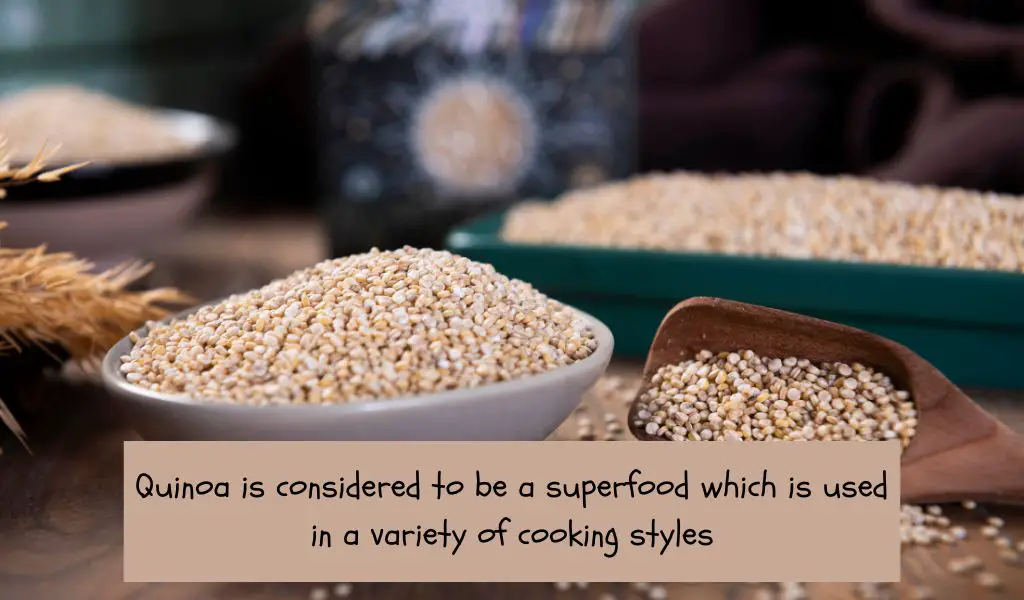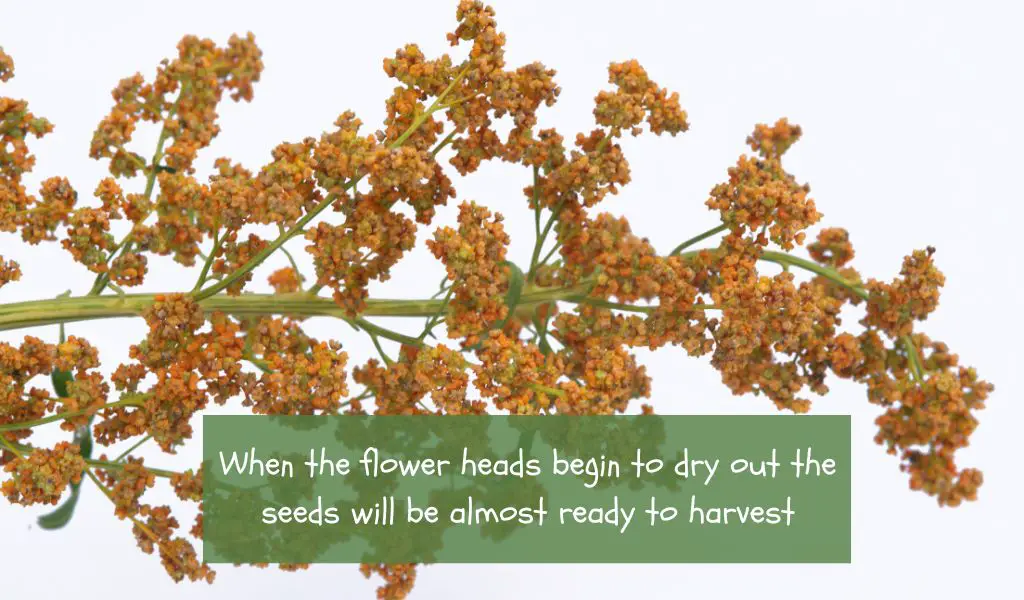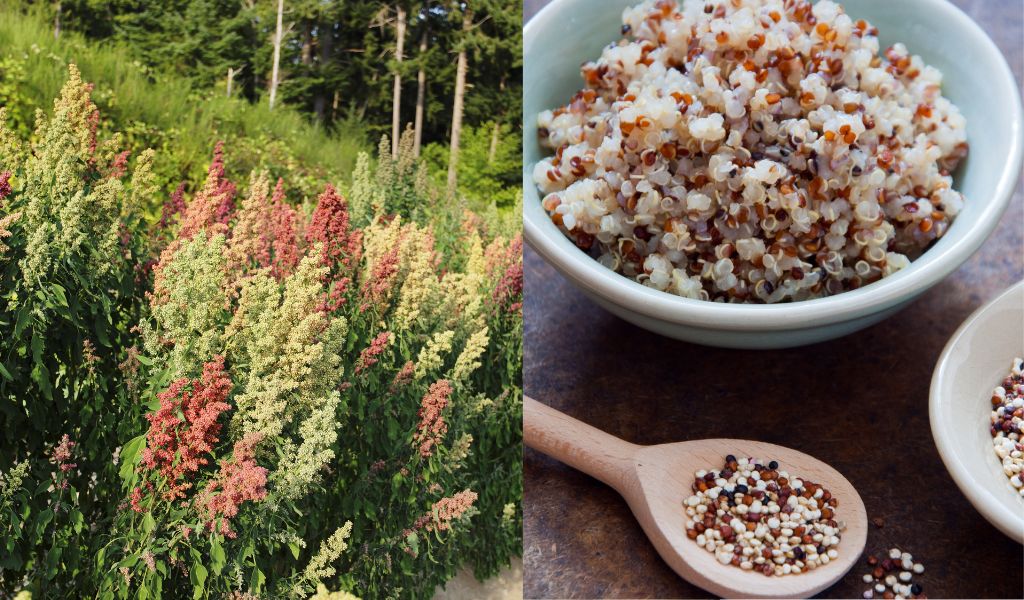Quinoa is a highly nutritious pseudo-cereal that has become increasingly popular in recent years due to its high protein and fiber content. But did you know that you can actually grow your own quinoa from the store?
That’s right, it’s possible to turn raw quinoa seeds into fresh, healthy plants with just a little bit of effort.
In this blog post, we’ll take an in-depth look at how to grow quinoa from the store and answer some commonly asked questions about growing this superfood. So if you’re looking for an easy way to add more nutrient-dense foods into your diet, keep reading.
To get the best chances of success always use organic quinoa which has not been subjected to any treatment. Plant in well drained soil, in a sunny position and feed with good quality plant food during the growing season.
Overview of quinoa
Quinoa, a type of plant native to the Andes Mountains of South America, is not only a dietary favorite but also purely delightful in its variety.
Each type of quinoa, including white, red, and black quinoa, has an individual taste and texture that presents wonderfully in meals.
However, knowing the difference between processed and raw quinoa is critical if you plan on growing it yourself.
It is important to note that many varieties of quinoa have under gone some processing to make them ready for use in cooking and this processing often results in seeds that won’t germinate.
Quinoa that has undergone heat or chemical treatments will be unsuitable for home growing – they simply will not grow.
If you intend to grow your own quinoa, then you’ll need to find varieties that are organic and that have not been subjected to any forms of treatment

Preparing the soil for planting
Once you have acquired a suitable variety of quinoa seeds, it is time to prepare the soil for planting.
Try to find a spot that receives at least 6 hours of sunlight a day. The ideal growing environment for quinoa should be sunny and warm (above 60°F), with well-draining sandy or loamy soil that has been enriched with organic matter such as compost.
Additionally, quinoa requires a rich and well-drained soil that’s packed with nutrients – adding fallen leaves to the mix of your soil helps supplement it with much needed minerals.
Adjusting the pH of your soil is also key – quinoa prefers a slightly acidic environment (pH of 6 or lower), so if your soil does not have such a pH level, you can either buy special “acidifying” fertilizers at any gardening shop or combine materials like sphagnum peat and pine needles.
Popular organic quinoa seeds
Planting quinoa seeds
Once your soil is ready to go, you can plant quinoa between the months of April and June.
Planting outdoors should be done when the soil has warmed and all danger of frost has passed.
To begin, simply scatter a few seeds over the prepared bed and cover them lightly with 1/4 inch of soil – no deeper.
You can space the seeds about 6 inches apart to allow them plenty of room to grow later on.
Water your seeds regularly, taking care not to over-water – quinoa prefers more dry soil than moist.
Once the seedlings have sprouted (approximately 10 days after planting) and reached a height of 3 inches, thin them to approximately 3-4 plants per square foot.
At a glance.. 💭
It is possible to grow quinoa from store-bought seeds, as long as they are labeled “raw” or “unprocessed”.
Quinoa prefers soil that is well-draining and rich in organic matter with a pH between 6.0 and 8.0.
Seeds should be planted 1/4 inch deep and spaced 6-12 inches apart.
Planting quinoa requires full sun and consistent moisture throughout the germination period.
To harvest quinoa, wait for the flower heads to dry out and turn brown, then cut off and dry the heads before separating the seeds.
Growing quinoa indoors is not recommended due to its large size and long growing season (90-120 days).
Caring for quinoa plants
To care for quinoa plants, it is important to water them regularly and keep the soil moist.
It is also essential to fertilize your plants every couple of weeks with a balanced fertilizer – this will help promote growth and healthy development.
As the quinoa plants grow, you may need to thin them out to ensure that each plant has enough space to grow and receive adequate sunlight.
Weeds can also be a problem when growing quinoa in the home garden, so make sure to pull them out by hand as soon as they start popping up.
Harvesting quinoa
Quinoa typically takes around three months to reach full maturity, and the first sign of readiness is when most of the rose-hued flowers have wilted away, leaving small pale berries in their place.
Quinoa seeds mature at different rates, so you will need to monitor the plants closely to determine when to harvest them.
You can tell when the seeds are ready for harvest when the flower heads start to dry out and turn brown.
However, it’s important to harvest the seeds before they begin to shatter and fall to the ground, as this can reduce the overall yield.
To harvest the quinoa, cut the seed heads off the plant and allow them to dry in a warm, dry location for several days.
Once the seeds are completely dry, you can remove them from the seed heads by rubbing them together or using a screen to separate the seeds from the chaff.

FAQs about growing quinoa
Q: Can I grow quinoa indoors?
A: While it’s technically possible to grow quinoa indoors, it’s not recommended due to its large size and long growing season.
Quinoa plants can grow up to 6 feet tall and require at least 3 months of warm weather to mature.
Q: How long does it take to grow quinoa?
A: Quinoa typically takes 90-120 days to mature from seed to harvest, depending on the variety and growing conditions.
Q: What is the best time to plant quinoa?
A: Quinoa is best planted outdoors between the months of April and June, once the soil has had a chance to warm up and all danger of frost has passed.
Planting should be done in well-draining sandy or loamy soil that has been enriched with organic matter.
For optimal growth, make sure to adjust the pH level of the soil to 6 or lower.
Q: How much yield can I expect when growing quinoa?
A: Quinoa yields vary depending on the variety and growing conditions, but a single plant can produce up to 80-100 grams of grain.
Yields can be increased by fertilizing regularly and harvesting at the right time.
Q: Does quinoa require a lot of maintenance?
A: While quinoa is relatively easy to grow, it does require regular watering and weeding, as well as occasional fertilizing.
Additionally, you may need to thin out the plants if they start crowding each other.
However, with proper care and attention, you should be able to enjoy a successful harvest of quinoa.
Q: Is there anything else I should know before growing quinoa?
A: Quinoa is relatively easy to grow, but it can be prone to certain pests and diseases such as aphids, whiteflies, powdery mildew and downy mildew.
It’s important to be on the lookout for these potential issues and address them immediately if they occur.
Additionally, quinoa is a drought-tolerant crop, but it still needs to be watered regularly to ensure optimal growth.
Final Words
Growing quinoa from the store is a great way to enjoy fresh, nutritious grains in your home garden.
While it does require regular maintenance such as weeding and fertilizing, with proper care you can easily yield up to 80-100 grams of grain per plant.
Additionally, be sure to monitor for potential pests and diseases that could impact growth or reduce yields.
Overall, growing quinoa at home offers an opportunity to create delicious meals while taking advantage of its nutritional benefits.
With these tips in mind, you’ll have no problem harvesting a successful crop of this ancient grain.




